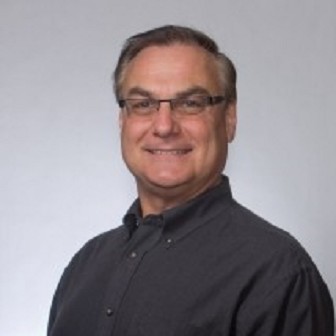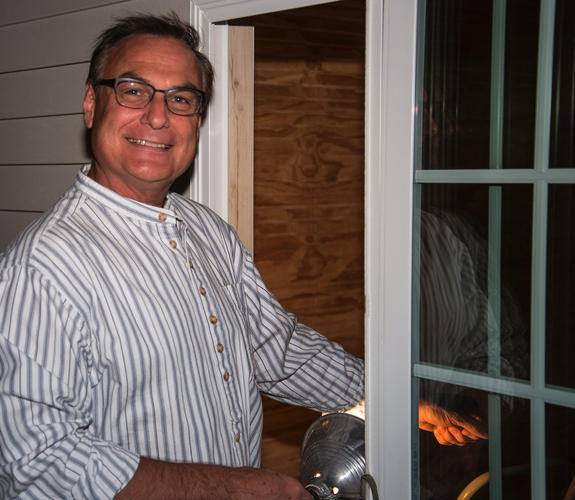The onset of winter has many community members thinking about the cost of energy. But folks with passively designed homes are sitting smug because they are paying around 80% less for heating (and cooling).
Darcy Bean Custom Construction, a small company that has been in the area for over twenty years, is one of the only construction companies certified to construct passively designed homes or convert standard homes to passive design in the area. The company has focused primarily on remodeling and additions; Darcy Bean Sr., who has been working in construction for forty years, is best known for kitchen and bath remodeling as well as large scale, full-home remodeling and addition work. Darcy Bean Jr., a partner in his father’s company, notes that his father has always been proud of being able to add on to vintage homes while maintaining the integrity of the period architecture of the home. According to Darcy Jr., “Dad always says, ‘My job is to make sure the addition blends in with the rest of the home.’”

After many years of remodeling and a handful of new home construction projects, Darcy Sr. learned about passive home design from the Ecological Construction Laboratory, operating out of Urbana and run by German-born architect Katrin Klingenberg. Passive house design appealed to him because, as Darcy Sr. noted, “I’ve always been involved in energy conservation.”
 “I grew up on a drafty old farm house,” Darcy Sr. said. “My father heated with propane, and he would talk all the time about how those dollars were going right out the chimney. I didn’t know a whole lot about home design back then. But about six years ago, I happened to read in the paper about passive house design conference was happening in Urbana. I didn’t know what passive house design was, so I read about it and thought it sounded cool. I went to the conference, and I was hooked. I thought, ‘Those people are really into conserving energy dollars.’”
“I grew up on a drafty old farm house,” Darcy Sr. said. “My father heated with propane, and he would talk all the time about how those dollars were going right out the chimney. I didn’t know a whole lot about home design back then. But about six years ago, I happened to read in the paper about passive house design conference was happening in Urbana. I didn’t know what passive house design was, so I read about it and thought it sounded cool. I went to the conference, and I was hooked. I thought, ‘Those people are really into conserving energy dollars.’”
Passive house design involves lots of insulation, lots of airtightness, and lots of planning, and Darcy Sr. noted that constructing or refurbishing a home to be a certified passively designed home is a stringent process.
“The process is very demanding. Trying to get a house or a commercial building to passive house standards is quite an undertaking, especially in terms of airtightness. For a certified passive design home, the goal is to have six-tenths of one air change per hour at a wind speeds of about 20 miles per hour. A normal home is designed to have five air changes per hour.”
Darcy Sr. said that air changes in a standard, code-built home are comparable to air changes in a passively designed home with a window open 24/7. “In a standard home,” Darcy Sr. said, “you will find window leaks, siding leaks, the little cracks in the walls and the drywall. It adds up over time.”
Constructing a new passively designed home is easier and more affordable, according to Darcy Sr. But even so, there is a lot of engineering that goes into passive construction. “You need insulation and more insulation,” said Darcy Sr. “You need all your windows facing in the most effective direction. You have to seal all the tiny gaps and cracks. And you still need to have air filtration.”
While constructing a passively designed home, Darcy Sr. and his team measure the difference in air pressure inside and outside the home to identify how many air changes per hour are occurring. The end result, according to Darcy Sr., is that the entire home can be heated by a 1500-watt hair dryer. “That’s because once the heat is in the home, it stays in the home. You control the environment because of the interior of the home, not because of uncontrollable, exterior forces like wind, heat, and cold.”
Retrofitting a standard home is more difficult because window directionality is harder to change, but Darcy Sr. noted that uncertified passively designed homes still allow homeowners to maintain comfort at a greatly reduced energy cost.
The upgrade cost for a new construction home is about 10%, which Darcy Sr. says is offset after about 10 years of homeownership due to the reduced energy costs.
“If you plan to live in your home for more than 10 years,” Darcy Sr. said, “you’ll be making money from year 10 on with a passively designed home.” And choosing a passively designed home doesn’t mean sacrificing other design choices. “You can build a house that looks like any house. With most passively designed homes, you’d never know they were more energy efficient than all the other homes on the block.”
 Despite the advantages of passive house design, Darcy Sr. says that the concept hasn’t really taken off in the Midwest. This surprises him, since Passive House Institute U.S., which is setting the standard for passively designed homes in the U.S., is based in Chicago and has an office in Urbana. In fact, the first passively designed home in the U.S. was built in Urbana.
Despite the advantages of passive house design, Darcy Sr. says that the concept hasn’t really taken off in the Midwest. This surprises him, since Passive House Institute U.S., which is setting the standard for passively designed homes in the U.S., is based in Chicago and has an office in Urbana. In fact, the first passively designed home in the U.S. was built in Urbana.
“The funny thing is that passive house design has taken off in the Northeast and the Northwest, but everyone comes here, to the Midwest, for the resources to get the work done. We’ve built four certified passive houses here in the area. All the time, I run into people who say that they can afford their heat bills, so they say they’re not interested in passive house design. But that will change. It will become harder to pay energy bills, and even if not, homeowners will still be saving money in the long run.”
In the meantime, Darcy Sr. is thinking ahead to other eco-friendly design projects. He says that one of his current interests is tiny houses. “When I was a kid, I would think, ‘Why do I need 1000 square feet, when all I do is sleep here?’ In today’s world, tiny houses really make sense. Unless you have a large family or you entertain a lot, you don’t need all that space.”
His innovative ideas are sure to keep Darcy Bean Custom Construction on the cutting edge of home design in the years to come.








